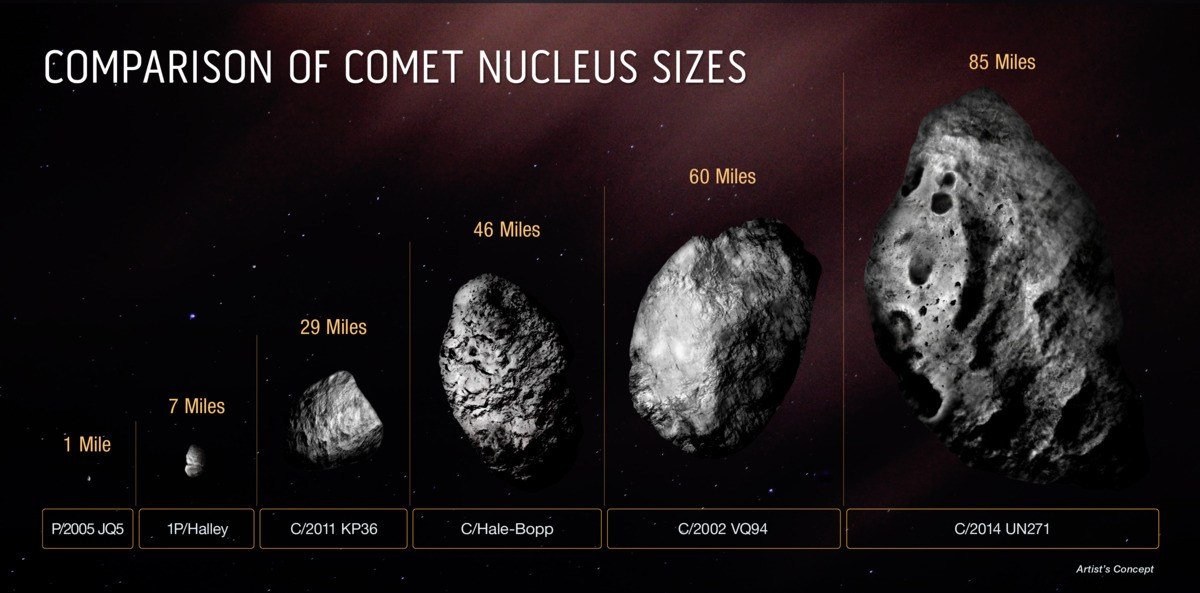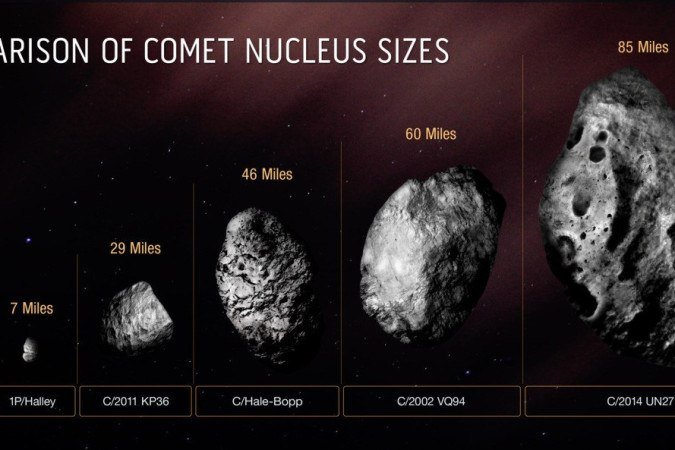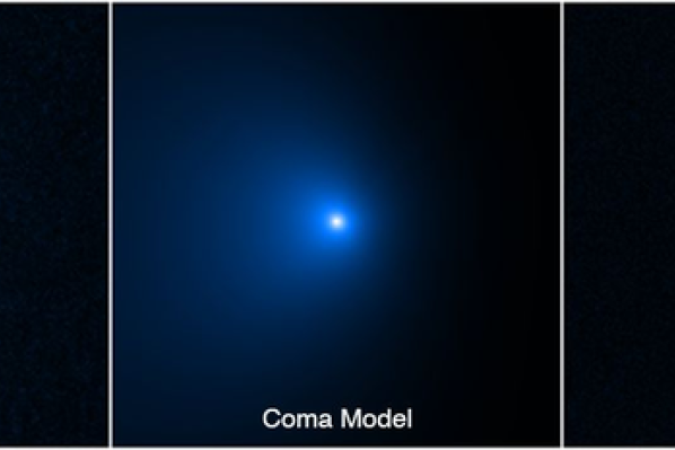Posted on 04/13/2022 20:23
The Hubble Telescope confirmed the data on the comet’s mass and dimensions, but showed that the comet’s nucleus is darker than estimated – (credit: NASA, ESA, Zena Levy (STScI))
The largest comet ever observed by astronomers is heading towards Earth at a speed of 35,400 km / h. But don’t worry, don’t panic. As usual in astronomy, proximity is a very relative concept. In this case, the closest C/2014 UN271 will come to Sun (in 2031) is a distance of 1.6 billion km. This means that in nine years, it will pass far from our planet a little from our planet Saturn Sixth planet Solar System (relative to the distance from the sun).
However, this phenomenon is considered unusual by astronomers and astrophysicists and has drawn the attention of scientists in the region for more than ten years for several reasons. The first is the dimensions of Comet Bernardinelli-Bernstein, also named C/2014 UN271. The two scientists who discovered it in 2010 are named after the Brazilian Pedro Bernardinelli and the American Gary Bernstein.
With an estimated diameter of 130 km, which is slightly less than the distance between central Brasília and the city of Pirinópolis, the comet became confused with Dwarf planet – like Pluto – Time to find them. The confusion arose because finding a comet of this size is extremely rare, since its nucleus is about 50 times larger than the average celestial body of the same class.
In addition, Bernardinelli-Bernstein is a remnant of the Solar System for its age, estimated at 4 billion years, and comes from a region for which there is almost no data, only theories called the Oort cloud. “This comet is literally the tip of the iceberg of many thousands of comets too faint to be seen in the farthest parts of the Solar System,” explained David Jewett, professor of planetary sciences and astronomy at the University of California (UCLA). ).

(Photo: NASA, ESA, Zina Levi)
Hubble confirms a mass of about 500 trillion tons
Jewett is co-author of a study on C/2014 UN271 published in Astrophysical Journal Letters On Tuesday (13/4). For the scientist, one of the most important functions of new data, which is collected through Hubble telescopeis to confirm dimensions that, until then, only scientists could estimate.
The size of the comet’s core is nearly 500 trillion tons, which is the size of the core of Mount Everest. This is 100,000 times the mass of a typical comet found very close to the sun. However, C/2014 UN271 is less bright than scientists thought, with a somewhat dark and solid core, as well as a cloud of dust and gas that surrounds it.
“We thought the comet could be very large, but we needed the best data to confirm that,” said lead study author Man Tu Hui, who received a Ph.D. from UCLA in 2019 and is now at the University of Science and Technology. Macau in Taipa, Macau. “That’s amazing considering how active it is when it’s still out of the sun.”

(Photo: NASA, ESA, Man-To Hui (Macau University of Science and Technology), David Jewitt (UCLA). Image processing: Alyssa Pagan (STScI))
The distance between Bernardinelli-Bernstein and the Sun is less than 3 billion km. Within a few million years, it will return to its original place in the Oort cloud, according to Professor Jewett. The theory is that this region is home to trillions of comets and is a few hundred times the distance between the Sun and Earth, at least a quarter of the distance from the closest stars to our Sun in the Solar System. Alpha Centauri.
Article Hubble Space Telescope Discovering the Heart of Comet C/2014 UN 271 (Bernardinelli-Bernstein) It can be read in fullon the page Astrophysical Journal Letters.

“Incurable thinker. Food aficionado. Subtly charming alcohol scholar. Pop culture advocate.”








More Stories
NASA Releases Selfie of Perseverance Rover Working on Mars
NVIDIA driver includes hidden Final Fantasy XVI profile
PlayStation Plus Extra and Premium saw a significant drop in players in July